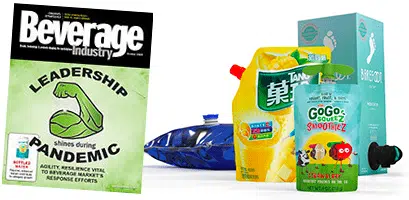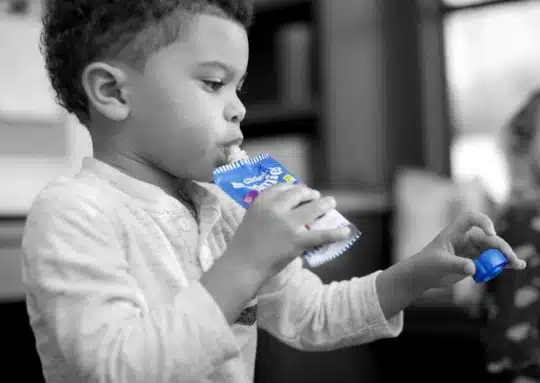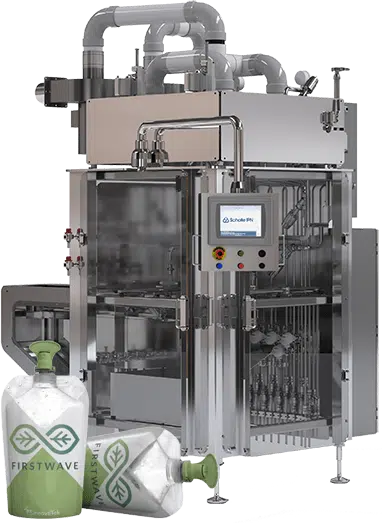Aseptic Packaging Growth and the Beverage Industry
Beverage Industry Article Overview
 Peter Messacar, director of business development at Scholle IPN, was recently interviewed for an October, 2020 Beverage Industry article that looks into the beverage industry and how packaging suppliers are seeking to deliver a balanced approach that focuses on functional, reusable and recyclable attributes in their aseptic cartons, pouches or bag-in-box (BIB) packaging.
Peter Messacar, director of business development at Scholle IPN, was recently interviewed for an October, 2020 Beverage Industry article that looks into the beverage industry and how packaging suppliers are seeking to deliver a balanced approach that focuses on functional, reusable and recyclable attributes in their aseptic cartons, pouches or bag-in-box (BIB) packaging.
Key Article Takeaways
- Today’s active consumers continue to seek better-for-you, clean-label beverage options. Reducing a product’s carbon footprint is key.
- Millennials are poised to change many aspects of business now and in the future — including the packaging of the beverages they drink and foods they eat. This generation puts a significantly higher priority on sustainability than previous generations.
- Most beverage brands employ multiple packaging options. Very few are left only offering their products in a single package format.
- The move toward a circular economy — where packaging can be created, used and re-envisioned after use — is a focus of manufacturers, retailers and consumers alike.
Q&A: A Deeper Dive With Peter Messacar

How are beverage-makers utilizing pouches, cartons, aseptic and bag-in-box packaging?
“There are very few brands who only package in a single format. The smart brands are starting to realize that packaging fits a function within their brand portfolio. So you will see a wine brand produce a traditional glass bottle of wine for consumers who are looking for a gift or bottle o bring to a dinner with friends, a 1.5-liter bag-in-box for consumers who just want a single glass of wine each night or require more wine for a party, and smaller pouches as a way to allow their customers to sample a wider range of their wines to drive future growth.”
What trends are driving the use of these packages?
“The trends that drive brands to flexible packaging in 2020 are really the same that drove them to flexible packaging in the 1950s. It’s supply chain pressure on traditional rigid packaging like aluminum cans; size requirements for larger volume packages; changing consumer habits toward bulk purchasing; or consumer desire for healthier products that require packaging technology to enable its protection and delivery.”

“For the aseptic dairy beverage market, there has never been more focus on formulating and packaging clean-label and natural products, often leading consumers to non-traditional sources like plants. Flexible formats like pouch and bag-in-box are able to deliver clean-label beverages like dairy in an aseptic format; reducing the need for unnatural preservatives and really keeping the product as natural as possible. They’re also often positioned as being good for the Earth, either by keeping their animals healthier or with a better footprint via their packaging. Consumers are responding to this. According to Mintel, from August, 2019 – July 2020, North America saw the first period where product launches featuring flexible packaging overtook those in traditional rigid packs (bottles).”
What impact is the U.S. Plastic Pact, a collaborative led by The Recycling Partnership and the World Wildlife Fund (WWF), to advance all plastic packaging to become reusable, recyclable or compostable by 2025 having on today’s plastic materials?
“The move toward a circular economy, where packaging can be created, used, and re-envisioned after use will continue to be a focus for manufacturers like us as well as retailers. As the US’s recycling infrastructure is updated and improved, many of the great innovations the flexible packaging industry has already made can find its place.”
“Additionally, we think it’s important to continue to educate consumers of the environmental benefits of flexible packaging. Pouches and bag-in-box packaging consistently out-perform traditional rigid formats like glass and plastic bottles and metal cans. For example, a 1.5-liter bag-in-box package has a process greenhouse gas reduction of 82% versus glass bottles used to package the same amount of liquid. A 10-liter bag-in-box package has 66% less post-consumer solid waste compared to the multiple PET bottles needed to package the same volume. Climate change and carbon footprint are related and we’re working hard to reduce our customers’ carbon footprint through our lightweight, right-sized flexible packaging solutions.”
What are the benefits to using this type of packaging?
“Flexible packaging formats like pouch and bag-in-box are able to scale up and down in size to fit any brand or sales channel requirements. Companies are not necessarily handcuffed to a particular size or shape; giving them real control over their product’s place in the market now and future development.”
“We’re looking at continued growth in beverage, especially beverages with some type of additive either for health (like pH) or energy (with caffeine). Take water for example, our research shows a volume growth in the US water market from 58.6 billion liters in 2020 to 71.7 billion liters in 2024. With the concurrent explosion of beverage sales in ecommerce, it’s hard not to believe most of this growth won’t be shipped through the mail system. So, for bag-in-box packaging with a product like water, we see a channel-specific size and use case where end consumers can receive a box of water shipped in a package that requires zero secondary or tertiary packaging, ready to use on their counter or in their refrigerators. As the world’s office workers begin a slow transition to working from home more often, having a refreshing, product like a premium water on-tap should find a natural fit in this new ecosystem.”
What are some of the challenges? How can these be overcome?
 “One of the most difficult challenges to packaging an aseptic beverage of any kind is the overall complexity and costs related to doing it well. The upstream equipment is often very large and requires great skill to effectively and safely run. And, delivering and filling the product requires a stringent oversight and testing protocol. Aseptic is great, but it’s not for everyone. But we’re starting to see a growing number of contract packaging partners spring up all over the US. And this is really how brands can overcome the hurdle of getting their brand and products into this valuable format. The co-packer has installed upstream and filling equipment; staffed quality and laboratory headcount; and has experience managing the risk of this type of format and do it very well.”
“One of the most difficult challenges to packaging an aseptic beverage of any kind is the overall complexity and costs related to doing it well. The upstream equipment is often very large and requires great skill to effectively and safely run. And, delivering and filling the product requires a stringent oversight and testing protocol. Aseptic is great, but it’s not for everyone. But we’re starting to see a growing number of contract packaging partners spring up all over the US. And this is really how brands can overcome the hurdle of getting their brand and products into this valuable format. The co-packer has installed upstream and filling equipment; staffed quality and laboratory headcount; and has experience managing the risk of this type of format and do it very well.”
What products does Scholle IPN offer in the pouch, carton, aseptic, and bag-in-box packaging segment?
“Scholle IPN is uniquely positioned to offer nearly every size and functionality of flexible packaging from 3-ounce spouted pouches to 300-gallon bulk liners. For retail beverages, bag-in-box packaging seems to find its niche at sizes of 2-liters to 5-liters. These packages can feature a range of fitments or taps; from simple toggle functionality to closed-loop connectors used in restaurant dispensers.”
“No two brands are exactly the same and certainly the new economy and its sales channels are changing by-the-day. Having the ability to work closely with our customers to engineer and customized package and functionality that best fits their sales channel and end-customer use is a great benefit of flexible packaging. It’s really about flexibility in everything, not just the materials.”
What is on the horizon for pouches, cartons, aseptic and bag-in-box packaging in the beverage industry?
“I’m seeing a place for traditionally fresh-produced beverages like milk, smoothies, and juices make the switch to aseptically-packaged; eliminating the need for cold-chain logistics. Surely the explosion in ecommerce sales and distribution will quickly push brands into this format as consumer trips to brick and mortar marketplaces are going to remain low for the foreseeable future.”
“The move toward a circular economy, where packaging can be created, used, and re-envisioned after use will continue to be a focus for manufacturers like us as well as retailers. As the US’s recycling infrastructure is updated and improved, many of the great innovations the flexible packaging industry has already made can find its place.”
